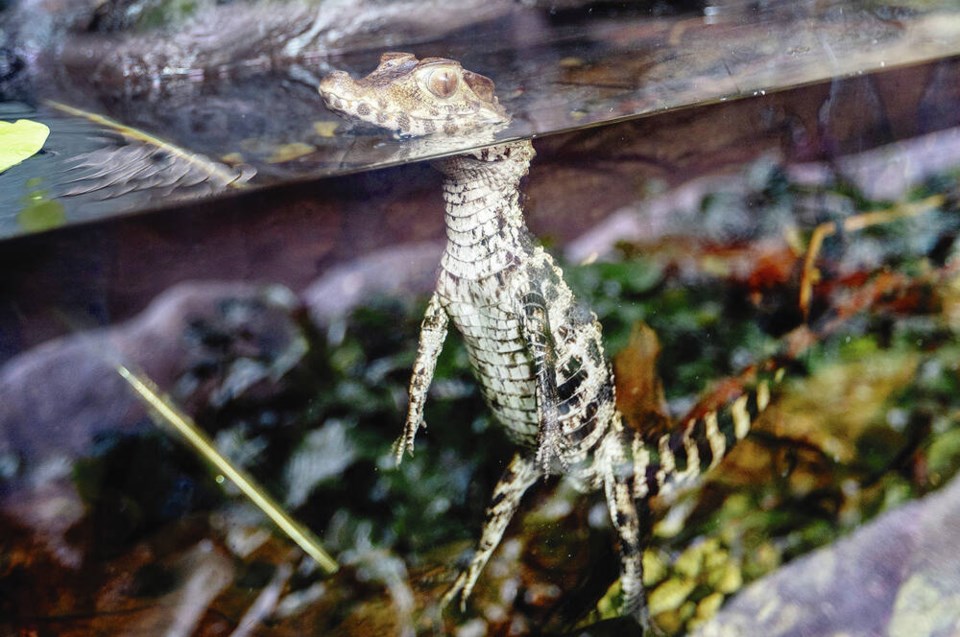Javier the tiny caiman floats calmly in the warm waters of its tank at Victoria Butterfly Gardens, thousands of kilometres north of where its relatives live in the wild.
Just 46 centimetres long, Javier is a Cuvier’s dwarf caiman, the smallest New World crocodilian, normally found in north and central South America.
Since late January, Javier has been living in a 180-gallon tank at the gardens after being seized by Canadian officials investigating a wildlife-trafficking scheme.
The caiman was being held illegally without necessary permits, the gardens said in a statement.
“This represents a victory against illegal wildlife trade but also underscores our commitment to the welfare of rescued or surrendered creatures,” said Ronalea Durance, general manager of the gardens.
Falon Lancey, animal curator at the gardens, is the caiman’s main caregiver and said she is pleased to see how well it has settled in.
Although the animal has been named Javier, its gender isn’t known. Its age is also unknown, since factors such as available food can affect growth, said Lancey, who estimates the caiman is between two and four years old.
Its behaviour does not give any hints as to whether it was originally captured in the wild or bred in captivity for the pet trade. Some are sold in the U.S. as pets, for a few hundred dollars, according to online prices.
Word went out from Environment and Climate Change Canada about a year ago that the caiman needed a home and Butterfly Gardens applied.
The attraction only takes in animals needing rescuing or new homes, and does not buy animals, other than insects.
The process took several months because a special permit from B.C. is required to take in a species alien to this area. Provincial officials ensure that the care and facilities are suitable.
Fresh-water caimans are on the International Union for Conservation and Nature’s red list of threatened species. Their range is vast, including Brazil, Trinidad and Peru.
After being placed in the tank at the gardens, the caiman appeared relaxed and did not hide. “It wasn’t stressed at all,” Lancey said.
Its favourite basking spot is a log under a heater.
So far, Javier is a “pretty shy eater,” Lancey said. “We leave food out on the log and when we come back it’s gone.”
The caiman is gaining weight on a diet that includes shrimp with shells on, prawns, salmon, snails, mice, insects and worms.
Javier was 430 grams at the end of January, but by Feb. 17, the most recent weigh-in, that had climbed to 452 grams. “He is definitely growing, which is what we like to see,” Lancey said.
When it’s an adult, which will take several years, the caiman will be about 1.5 metres long.
If it remains at the gardens, it will need a larger tank.
In the wild, these kinds of caimans live about 25 years, but they can reach 60 years in captivity, she said.
Although Javier is on its own, that’s just fine, since they’re not typically social animals, Lancey said.
In fact, they can be carnivorous, so there’s a safety risk in putting them together.
The caiman’s status at the gardens is temporary while the wildlife investigation continues, she said.
>>> To comment on this article, write a letter to the editor: [email protected]



